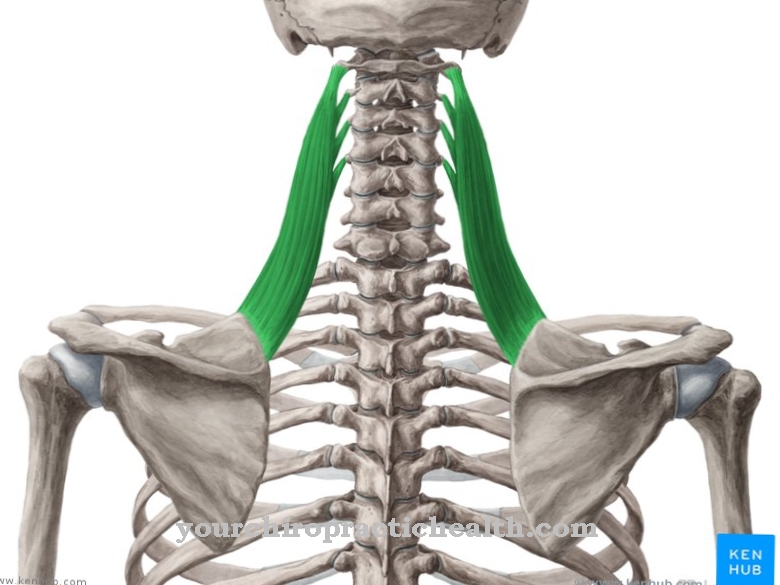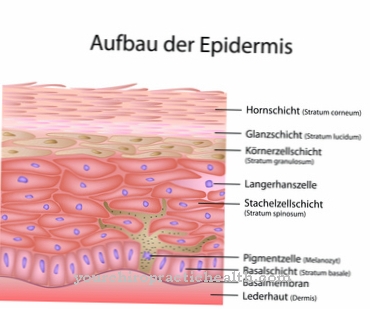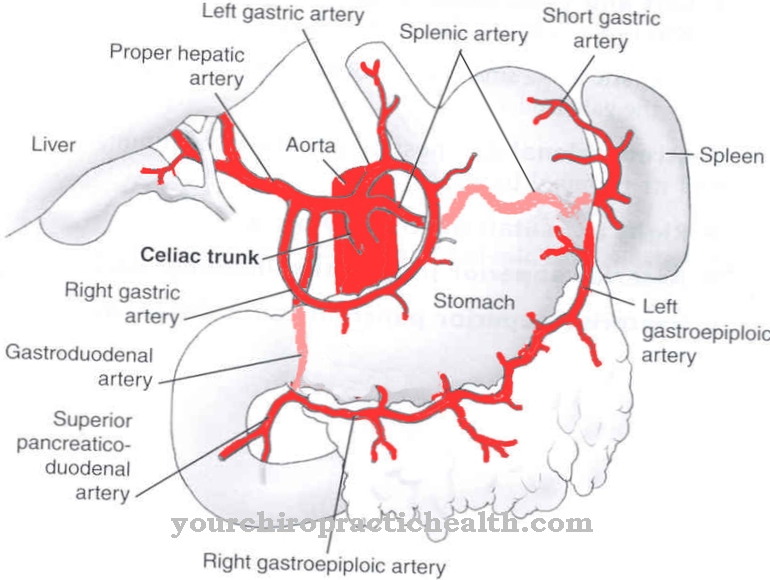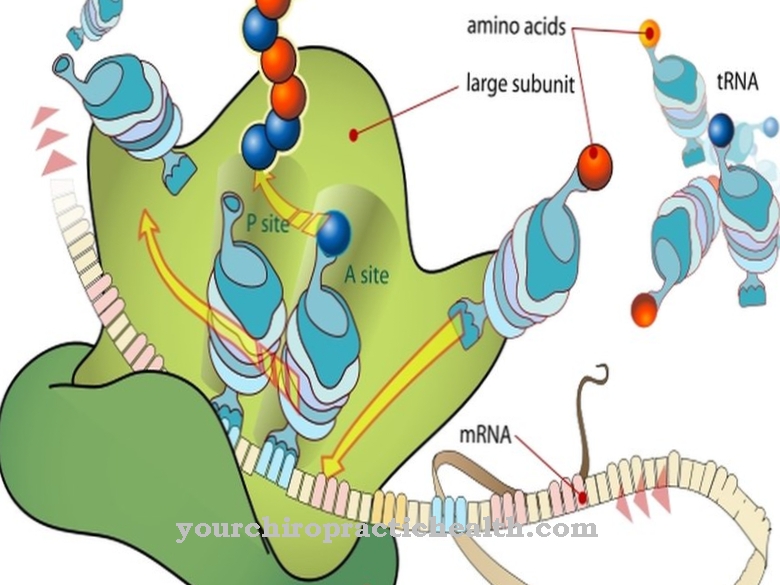The Ribs give the chest its typical shape and are usually present in pairs in humans. The number of pairs of ribs here corresponds to the number of vertebrae in the thoracic spine.
What are ribs
By definition they are Ribs Curved bones arranged in pairs, which are rod-shaped and originate on the dorsal side, i.e. on the back of the thoracic vertebrae.
Together with the thoracic vertebrae and the sternum (the breastbone), the ribs form the thorax, i.e. the bony chest.
Anatomy & structure
According to the number of thoracic vertebrae, there are the same number of pairs of ribs, so the human skeleton has 12 pairs of ribs.
Each one is built up rib from the costal bone, the rib bone, which is joined by a section of cartilage. The costal cartilage is located in the anterior part of the chest and is known as the costal cartilage. Between two consecutive ribs there is an intercostal space (ICR), which is also known as the intercostal space.
This is where the intercostal muscles are found, which act as auxiliary breathing muscles. The cartilage of ribs six to ten has grown together in most cases and is called articulationes interchondrales, i.e. the articulated connection of the costal cartilage.
Each rib has a rib head, the caput costae, with which it forms an articulated connection to the respective thoracic vertebra. This is followed by the rib neck, collum costae, and rib body, corpus costae.
In humans, the first seven pairs of ribs are connected directly to the sternum, the breastbone, via the costal cartilage, and are therefore referred to as real ribs, costae verae. Since the pairs of ribs 8, 9 and 10 connect with each other and with the sternum via the cartilaginous costal arch, these are called false ribs, Costae spuriae. The rudimentary ribs, Costae fluctuantes, end in the free abdomen and are often called "meat ribs".
Functions & tasks
Functionally form the Ribs with the thoracic vertebrae and the sternum the bony rib cage. In doing so, they protect the internal organs of the heart and lungs. Via the articulated connections to the thoracic vertebrae and the intercostal muscles located in the intercostal spaces, the ribs rise and fall and thus enable breathing. The play that is possible between inhalation and exhalation is usually around 2 cm.
Diseases
Often, chest pain is equated with lung or heart problems. Findings in the area of Ribs prove. Bruised ribs as a result of blunt trauma can cause significant breathing and movement problems.
Broken ribs as a result of falls or accidents are also common diagnoses. A complication of rib fractures is that injuries to the lungs, heart and main artery can occur. Rib fractures and rib bruises are often noticeable by pain when breathing and moving. Rib injuries in the anterior chest area in particular restrict breathing more than in the area close to the spine, where the back muscles take on some functions as supporting and holding muscles.
With colds or restricted mobility due to immobility, problems often arise in the area of the intercostal muscles. This can lead to restricted movement of the chest due to tension or inflammation and adhesions and thus to reduced depth of breath.
Intercostal neuralgia and pain in the area of the intercostal nerves are also known symptoms. Here, a belt-like pain in the area of the affected nerves runs along the chest. Since these often intensify with deep breathing or coughing, the symptoms are often mistaken for a heart attack and can trigger panic attacks.
Inflammation of the pleura, either as a result of a previous illness or an infection, often causes painful breathing difficulties with a fever. In some cases, creaking noises can also occur during breathing. Inflammation of the pleura can be differentiated from pneumonia using differential diagnostic measures.
In Bechterew's disease, one of the most well-known symptoms is the ossification of the rib joints and the associated stiffening of the chest. This leads to restriction of breathing movement and lead to painful breathing. Blockages in the rib joints also often lead to pain, which increases when breathing. If these blockages occur in connection with blockages in the thoracic spine, a vicious circle of pain and restricted movement can often be observed.
Typical & common diseases
- Broken rib
- pleurisy
- Bruised ribs
- Rib pain



























